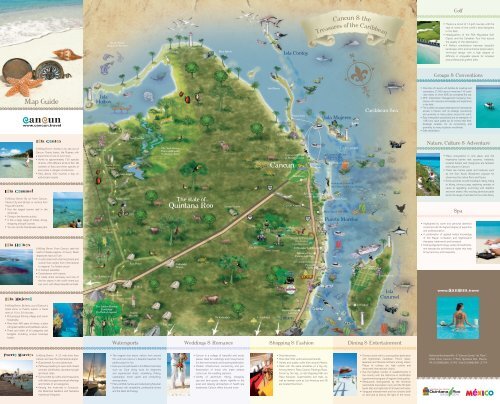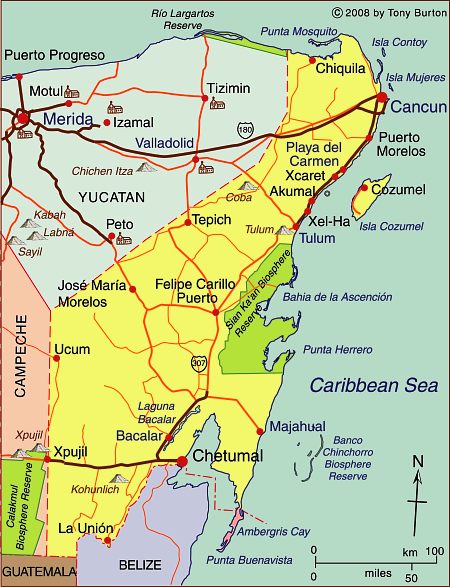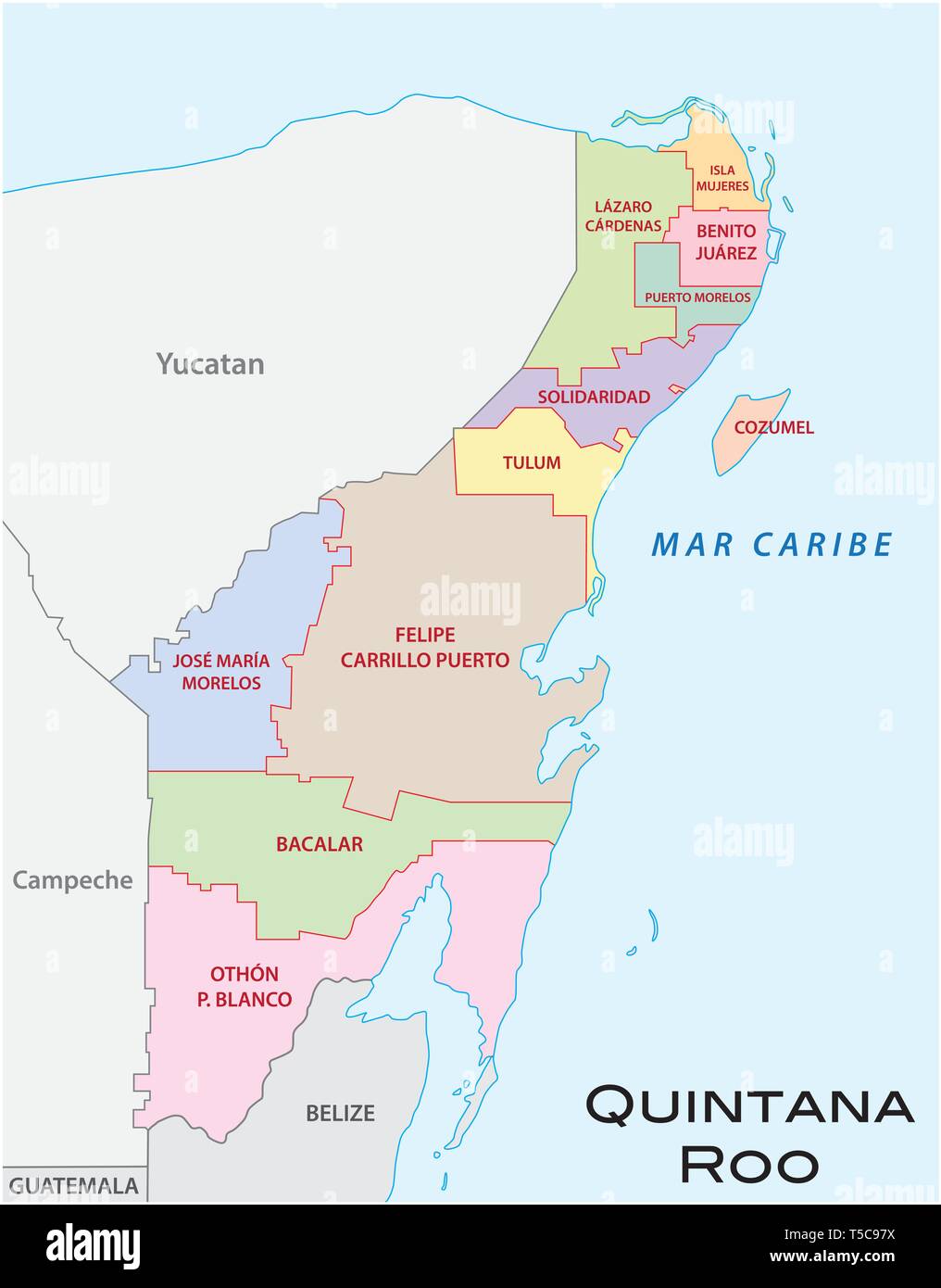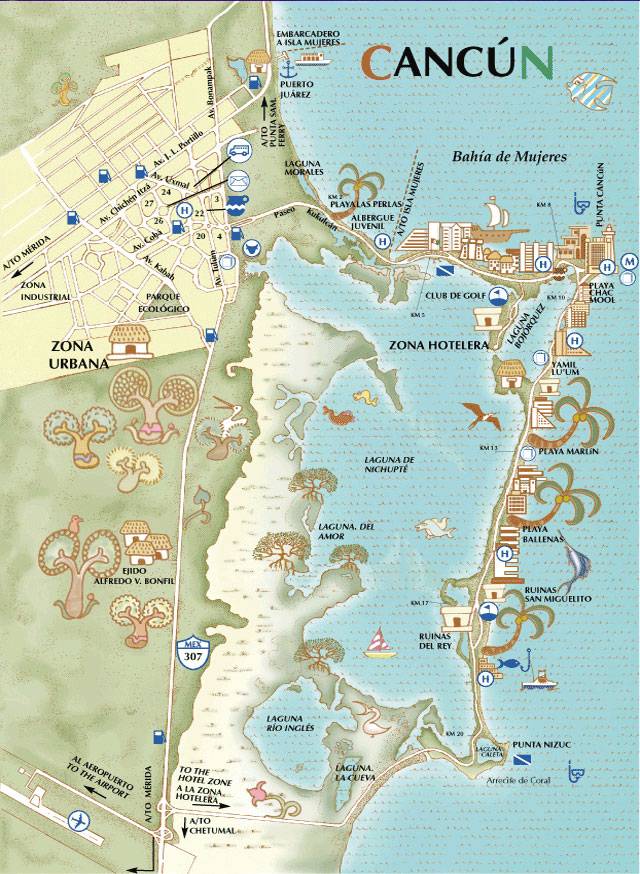Navigating Paradise: A Comprehensive Guide to the Map of Quintana Roo and Cancun
Related Articles: Navigating Paradise: A Comprehensive Guide to the Map of Quintana Roo and Cancun
Introduction
With enthusiasm, let’s navigate through the intriguing topic related to Navigating Paradise: A Comprehensive Guide to the Map of Quintana Roo and Cancun. Let’s weave interesting information and offer fresh perspectives to the readers.
Table of Content
Navigating Paradise: A Comprehensive Guide to the Map of Quintana Roo and Cancun

Quintana Roo, a vibrant state nestled on Mexico’s eastern Yucatan Peninsula, is a captivating blend of ancient Mayan history, breathtaking natural beauty, and a thriving tourism industry. Within its borders lies Cancun, a world-renowned resort city that serves as the gateway to this captivating region. Understanding the map of Quintana Roo and Cancun is crucial for anyone seeking to explore its diverse offerings.
A Geographic Overview: Decoding the Landscape
Quintana Roo’s map showcases a captivating tapestry of diverse ecosystems. The coastline stretches along the Caribbean Sea, boasting pristine white-sand beaches, turquoise waters, and vibrant coral reefs. Inland, the landscape transforms into lush jungles, home to ancient Mayan ruins, cenotes (natural sinkholes), and a rich biodiversity.
Cancun: The Heart of the Riviera Maya
Cancun, situated on the northern tip of the peninsula, is a bustling metropolis renowned for its vibrant nightlife, luxurious resorts, and proximity to world-class attractions. The city’s iconic Hotel Zone, a narrow strip of land jutting out into the Caribbean, is home to countless resorts, restaurants, and entertainment venues.
Beyond Cancun: Exploring Quintana Roo’s Treasures
While Cancun serves as the primary entry point, venturing beyond its borders reveals a treasure trove of experiences. The Riviera Maya, a stretch of coastline south of Cancun, boasts a string of charming towns, each with its unique character. Playa del Carmen, known for its bohemian vibe and proximity to the ancient Mayan city of Tulum, offers a different perspective on the region. Further south, Tulum, perched atop dramatic cliffs overlooking the turquoise waters, is a historical gem.
Navigating the Map: Key Points of Interest
- The Mayan Riviera: This region, encompassing the coastline south of Cancun, is home to numerous Mayan archaeological sites, including Tulum, Coba, and Chichen Itza.
- Cenotes: These natural sinkholes, formed by the collapse of limestone bedrock, offer a glimpse into the region’s unique geological history and provide opportunities for swimming, snorkeling, and diving.
- Xcaret Park: This eco-archaeological park offers a diverse range of activities, from exploring ancient Mayan ruins to swimming with dolphins and observing exotic wildlife.
- Xel-Ha: A natural aquarium and water park, Xel-Ha is renowned for its snorkeling and swimming opportunities in crystal-clear waters.
- Isla Mujeres: This tranquil island, a short ferry ride from Cancun, offers a laid-back atmosphere, pristine beaches, and opportunities for swimming with whale sharks.
Understanding the Map: A Guide to Transportation
- Air Travel: Cancun International Airport (CUN) serves as the primary gateway to the region, connecting to major international destinations.
- Buses: ADO, a reliable bus company, operates frequent services between Cancun, Playa del Carmen, Tulum, and other destinations within Quintana Roo.
- Ferries: Ferries connect Cancun to Isla Mujeres and other nearby islands.
- Rental Cars: While convenient for exploring the region at your own pace, traffic congestion and road conditions can be challenging in some areas.
FAQs: Unraveling the Mysteries of Quintana Roo and Cancun
Q: When is the best time to visit Quintana Roo and Cancun?
A: The best time to visit is during the dry season, from November to April, when temperatures are pleasant and rainfall is minimal.
Q: What is the currency used in Quintana Roo and Cancun?
A: The official currency is the Mexican Peso (MXN). However, US Dollars are widely accepted in tourist areas.
Q: What is the language spoken in Quintana Roo and Cancun?
A: The official language is Spanish, but English is widely spoken in tourist areas.
Q: Is it safe to travel to Quintana Roo and Cancun?
A: Like any tourist destination, it’s essential to exercise caution and be aware of your surroundings. However, Quintana Roo and Cancun are generally safe for tourists, especially in popular tourist areas.
Tips for a Memorable Journey
- Plan your itinerary in advance: Booking accommodations and tours ahead of time, especially during peak season, is recommended.
- Pack light: Clothing for warm weather, swimwear, and comfortable walking shoes are essential.
- Learn basic Spanish phrases: While English is widely spoken, knowing a few basic Spanish phrases can enhance your interactions with locals.
- Respect local customs: Be mindful of cultural sensitivities and dress appropriately when visiting religious sites.
- Stay hydrated: The tropical climate can be hot and humid, so it’s crucial to drink plenty of water.
- Protect yourself from the sun: Wear sunscreen, sunglasses, and a hat to avoid sunburn.
- Be aware of your surroundings: Keep an eye on your belongings and be cautious of pickpockets.
- Negotiate prices: In some markets and shops, bargaining is expected.
Conclusion: A Journey of Discovery
The map of Quintana Roo and Cancun serves as a guide to a diverse and captivating region. From the vibrant energy of Cancun to the tranquility of Isla Mujeres, the region offers something for everyone. Whether you’re seeking adventure, relaxation, or a glimpse into ancient history, Quintana Roo and Cancun promise an unforgettable journey. By understanding the map, you can navigate this paradise and discover its hidden treasures.








Closure
Thus, we hope this article has provided valuable insights into Navigating Paradise: A Comprehensive Guide to the Map of Quintana Roo and Cancun. We thank you for taking the time to read this article. See you in our next article!